
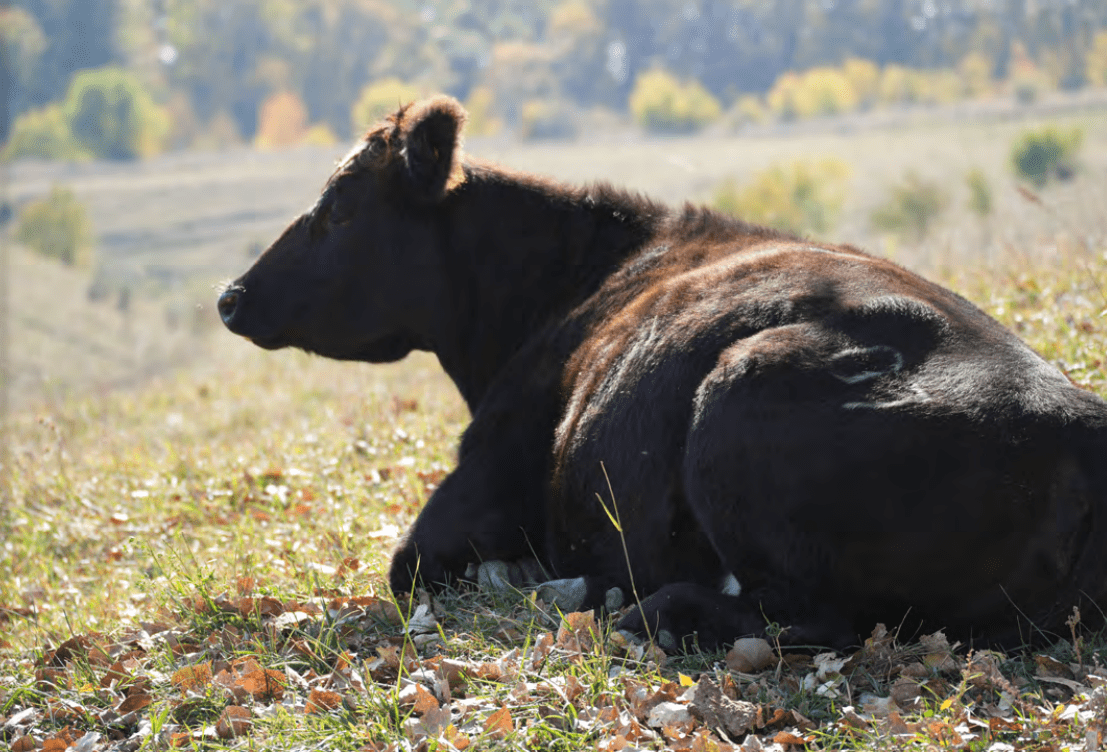
In nature, cattle and other grazing species exist at the bottom of the food chain and, as such, are at risk of predation if they appear ill or weak. From a survival standpoint, they are wired to try to appear healthy and fit until they simply cannot fake it anymore. For this reason, we must be alert to even the most minor signs of illness in order to initiate treatment early to increase the chance of treatment success.
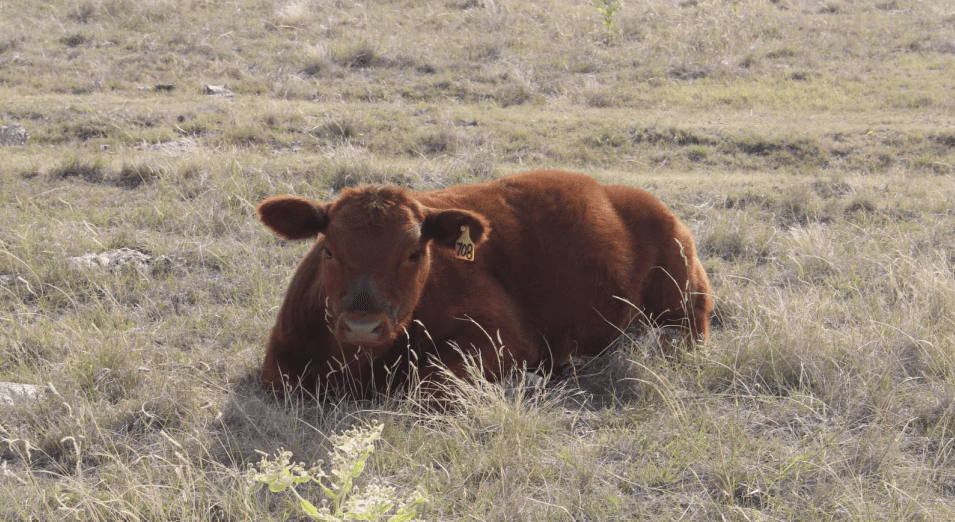
Whether it is a feedlot steer or a commercial cow, we know that very severe illness or injury must be present for an animal to be unwilling or unable to stand. Anytime an animal is unable to rise, it is critically important that we make a correct diagnosis as soon as they are found and get proper treatment initiated.
Most of the causes of cattle not being able to stand fall into what veterinarians refer to as the “5 Ms of Down Cows”. These are categories of disease which help us to develop a list of possible causes and work through each one to determine the cause for a given case. The five Ms are: Mastitis, Metritis, Metabolic, Musculoskeletal and Mystery. Yes, you read that last one correctly!
1. Mastitis is an infection of the udder that, with certain bacteria present, releases toxins into the bloodstream making a cow severely ill. This generally occurs in the early days after calving. These infections are so serious that antibiotics alone are not sufficient to effect a cure and often require aggressive treatment to save them. In these cases, the udder may be warm to hot to the touch and the skin reddened and progress to the udder being cold with a purple color.
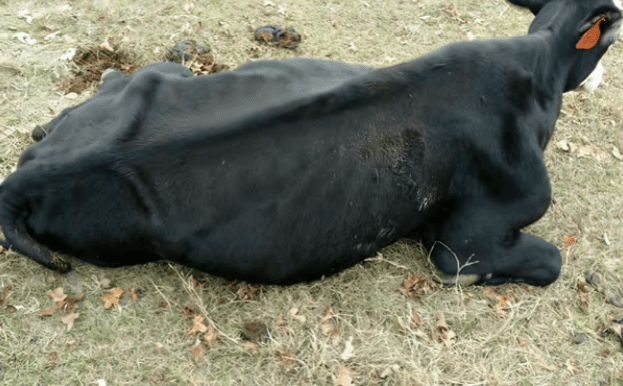
2. Metritis is an infection of the uterus that, like mastitis, can have certain bacteria present that release toxins into the bloodstream causing severe illness. Also like mastitis, this typically occurs very soon after calving and requires more therapy than antibiotics alone. Metritis can often be detected by a brown or red, foul-smelling discharge from the cow’s vulva.
3. Metabolic diseases include several conditions where the metabolic processes of the animal become so disturbed that their nervous system and muscles lack the function to enable them to stand. These can include low magnesium (grass or winter tetany), low potassium, low phosphorus, and protein-energy malnutrition. When consuming grass or diets that are low in magnesium, potassium and phosphorus, an animal’s muscles are not able to contract in a coordinated way and they become too weak to stand. These deficiencies are easily corrected after a proper diagnosis and improvement in the diet. Protein-energy malnutrition occurs in animals on poor quality diets and is marked by a poor body condition score (Figure 1), often a hay belly, and significant weakness. This occurs most common in the winter due to dormant forage having lower nutritional value and poor digestibility. This condition is particularly prevalent in heifers in spring calving herds because they have the additional demands of growing themselves and growing a late-term calf. Older cattle with poor teeth (Figure 2) are also at risk. Internal parasites can also contribute to this condition. Cases of protein-energy malnutrition are rarely successfully treated due to their severity at the time of diagnosis. It is critical that sufficient planning goes into feed stockpiling to maintain the mineral, energy and protein needs of all cattle throughout the year.

4. Musculoskeletal diseases include conditions of the musculoskeletal or nervous systems which impair the ability to stand. These could include fractures (usually of the spine or upper limbs), calving paralysis from a difficult calf delivery, a brain abscess in a feedlot steer, or any other injury where there is direct damage to nerves or compression by nearby swelling. Some of these conditions may be manageable and result in recovery through the use of anti-inflammatory medications, but efforts should be made to identify conditions with a poor prognosis, like fractures, early in order to minimize the duration of pain.
5. And then there is Mystery. Most of the time, a thorough evaluation by a veterinarian can identify one of the above causes in a case of a down cow. Occasionally, though, we just cannot identify the cause. In these cases, there are likely a combination of causes which are not easily defined that culminate in enough dysfunction in the body to result in severe weakness. These cases are frustrating to livestock owners and veterinarians alike, particularly when the animal is an “alert downer”, a cow that is eating, drinking and generally healthy-appearing otherwise.
So, what should you do if you have a down cow (or calf or bull) on your place?
1. Immediately roll her up onto her chest so she is sitting up and use hay bales or a vehicle to prop her up so that she is stable. Cattle laying on their side are unable to remove the gas from their rumen, causing bloat which can be rapidly fatal. Laying flat also puts the full weight of the animal on the legs of the down side, causing muscle and nerve damage, significantly reducing their chance of recovery.
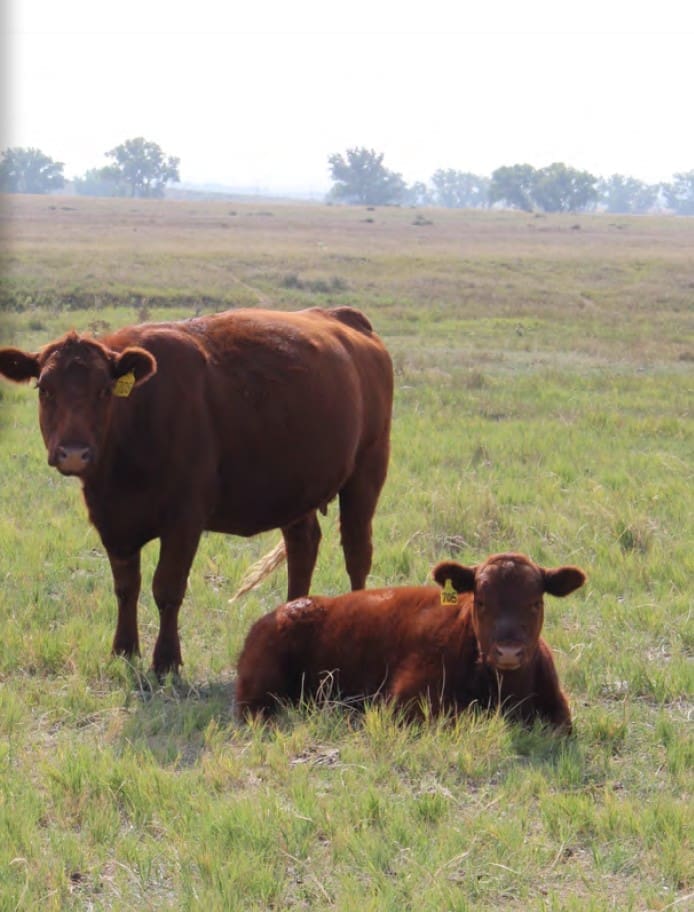
2. Call your veterinarian. With each day that a cow is down, the chances of her getting back up are significantly reduced. Getting a proper diagnosis and early treatment are the strongest predictors of success. On the other hand, if her illness or injury is irreversible, it is important to determine this early in order to be able to end her suffering. Letting her lay simply to see what happens rarely ends well and often results in a worsening of her condition.
3. Handle her gently. If she must be moved to another location, she should never be dragged by a limb or the head/neck, which can cause severe injury. Rather, a sled can be fashioned out of a sheet of plywood or sheet metal, the cow rolled onto that, and the sled then pulled behind a vehicle.
4. Make fresh feed and water available at all times. Ensure that feed and water is within reach of the cow at all times and that pans are shallow enough to allow easy access throughout her treatment and recovery.
5. Adjust her position. While keeping her up on her chest, roll her slightly to the left and slightly to the right to give her legs on the down side a break. This will help maintain circulation to the limbs and reduce muscle crush injury from her weight.
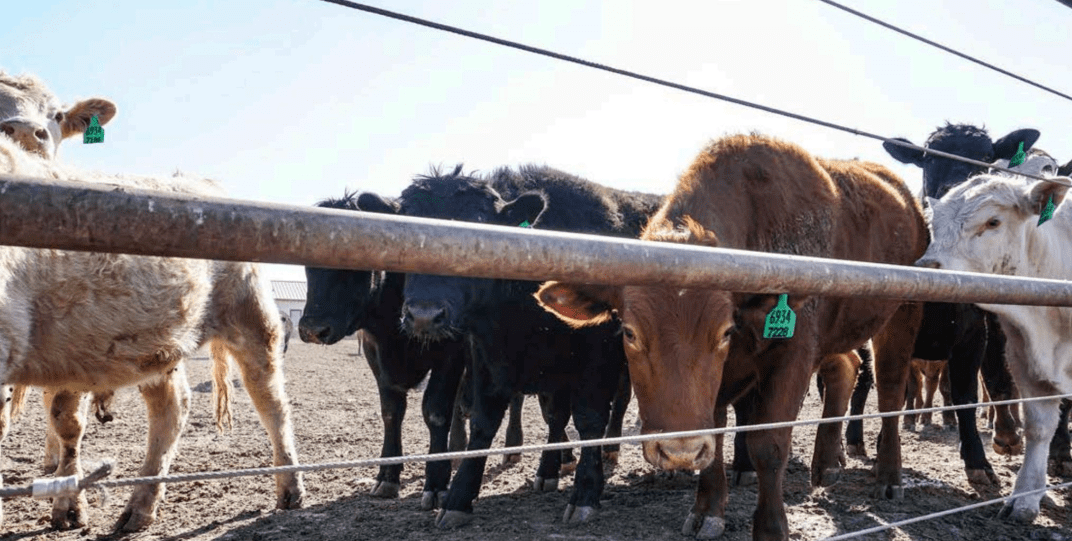
A down animal is probably the single most frustrating condition for which a ranch owner seeks a veterinarian’s advice. The size of cattle makes them difficult to manage and treat and, by remaining down, their weight causes further damage to muscles and nerves. No one wants a down animal and all of us who raise cattle hope it will never happen to us, but it likely will at some point. We should have plans in place for the steps we will take if we have an animal that can not stand on their own. We have a responsibility as their stewards to quickly identify the problem, handle them properly, and determine the most humane course of action in their management. For more information on humane management of down cattle, the American Association of Bovine Practitioners, the national organization of cattle veterinarians, has developed a position statement on the care of non-ambulatory (down) cattle, which you can find here: https://aabp.org/Resources/AABP_Guidelines/nonambulatory2020.pdf
 Dr. Meredyth Jones Cook received her veterinary degree from Oklahoma State University in 2002. She entered private mixed-animal practice in Brandenburg, Kentucky, later completing a residency in Large Animal Internal Medicine-Emphasis Food Animal and received a MS degree in Veterinary Biomedical Sciences at Oklahoma State University. She has taught food animal field services and internal medicine at Kansas State, Texas A&M and Oklahoma State. She owns Large Animal Consulting & Education, teaches part time for Texas Tech, and operates a ranch with her husband and 2 girls, raising beef and pork.
Dr. Meredyth Jones Cook received her veterinary degree from Oklahoma State University in 2002. She entered private mixed-animal practice in Brandenburg, Kentucky, later completing a residency in Large Animal Internal Medicine-Emphasis Food Animal and received a MS degree in Veterinary Biomedical Sciences at Oklahoma State University. She has taught food animal field services and internal medicine at Kansas State, Texas A&M and Oklahoma State. She owns Large Animal Consulting & Education, teaches part time for Texas Tech, and operates a ranch with her husband and 2 girls, raising beef and pork.
Get all Doc Talk episodes straight to your email inbox!